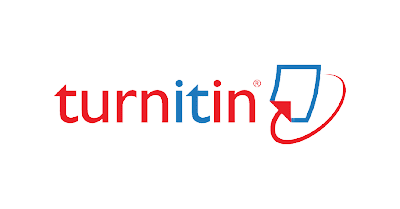SISTEM PENCAHAYAAN OTOMATIS PADA SMART HOME UNTUK LANSIA BERBASIS IOT
Abstract
Penelitian ini bertujuan untuk mengembangkan dan mengoptimalkan sistem pencahayaan otomatis berbasis Internet of Things (IoT) dalam rumah pintar, khususnya untuk mendukung kenyamanan dan keamanan lansia. Sistem ini dirancang untuk mengatur pencahayaan secara otomatis berdasarkan perubahan intensitas cahaya dan keberadaan penghuni, menggunakan sensor LDR dan sensor PIR serta perangkat IoT yang terintegrasi. Hasil penelitian menunjukkan bahwa sistem pencahayaan otomatis yang dikembangkan berjalan serasi antar komponen. Pengujian menunjukkan respon cepat terhadap perubahan cahaya dan gerakan oleh sensor LDR dan sensor PIR, lampu dapat bereaksi sesuai dengan waktu setempat yang telah dijadwalkan oleh RTC, lampu LED dalam kondisi menyala dapat disesuaikan kecerahannya oleh dimmer. Selain itu sistem ini dapat melakukan kontrol jauh melalui aplikasi mobile. Pada proses pengujian, metode blackbox testing diterapkan untuk mengoptimalkan fitur fungsional pada sistem yang dirancang agar pengguna dapat dengan nyaman memantau lampu otomatis melalui antarmuka aplikasi. Hasilnya, sistem ini berhasil membuktikan bahwa baik perangkat keras maupun aplikasi Blynk berfungsi dengan efektif dalam mengendalikan pencahayaan, sehingga dapat dimanfaatkan oleh pengguna dengan mudah dan memberikan manfaat signifikan.
Downloads
References
Albana, I., Asgalani, A., & Rachmadani, M. D. (2021). Esensial Internet Of Things Dalam Konsep Bangunan Cerdas (Studi Kasus: ESP8266 dan Prediksi Energi). Prosiding Seminar Teknologi Perencanaan, Perancangan, Lingkungan Dan Infrastruktur, 457–461.
Adhicandra, I. (2024). Studi Kasus Tentang Penggunaan Teknologi Internet of Things (IoT) Dalam Meningkatkan Efisiensi Energi di Bangunan Pintar. Edusaintek: Jurnal Pendidikan, Sains dan Teknologi. https://doi.org/10.47668/edusaintek.v11i3.1297
Basrowi, R. W., Rahayu, E. M., Khoe, L. C., Wasito, E., & Sundjaya, T. (2021). The Road to Healthy Ageing: What Has Indonesia Achieved So Far?. Nutrients, 13(10), 3441. https://doi.org/10.3390/nul13103441
Hong, Y.-K., Wang, Z.-y., & Cho, J. Y. (2022). Global Research Trends on Smart Homes for Older Adults: Bibliometric and Scientometric Analyses. International Journal of Environmental Research and Public Health, 19(22), 14821. https://doi.org/10.3390/ijerph192214821
Irianto, K. D. (2023). Pre-SEMMS: A Design of Prepaid Smart Energy Meter Monitoring System for Household Uses Based on Internet of Things. Journal of Electronics, Electromedical Engineering, and Medical Informatics, 5(2), 69-74. https://doi.org/10.35882/jeeemi.v5i2.282
Liao, J., Cui, X., & Kim, H. (2023). Mapping a Decade of Smart Homes for The Elderly in Web of Science: A Scientometric Review in CiteSpace. Buildings, 13, 1581. https://doi.org/10.3390/buildings13071581
Mahwati, Y. (2014). Determinants of Multimorbidity among The Elderly Population in Indonesia. Kesmas, Jurnal Kesehatan Masyarakat Nasional, 9(2), November 2014.
Madyaningrum, E., Chuang, Y.-C., & Chuang, K.-Y. (2018). Factors Associated with The Use of Outpatient Services among The Elderly in Indonesia. BMC Health Services Research, 18, 707.
Pal, D., Funilkul, S., Charoenkitkarn, N., & Kanthamanon, P. (2018). Internet-of-Things and Smart Homes for Elderly Healthcare: An End User Perspective. IEEE Access. https://doi.org/10.1109/ACCESS.2018.2808472
Patel, J., Thorat, S., & Dusane, S. (2020). Automatic Street Lighting Control System Using Microcontroller and Sensors. International Journal of Scientific Research in Science, Engineering and Technology. https://doi.org/10.32628/IJSRSET2072114
Rath, D. K. (2016). Arduino Based: Smart Light Control System. International Journal of Engineering Research and General Science, 4(2), March-April, 2016.
Robles, R. J., & Kim, T.-h. (2010). Applications, Systems and Methods in Smart Home Technology: A Review. International Journal of Advanced Science and Technology, 15.
Shrivastava, S. R. B. L., & Shrivastava, P. S. (2013). Health-care of Elderly: Determinants, Needs, and Services. International Journal of Preventive Medicine (Int J Prev Med), 4(10), October 2013.
Sovacool, B. K., & Rio, D. D. F. D. (2020). Smart home technologies in Europa: A Critical Review of Concepts, Benefits, Risks and Policies. Renewable and Sustainable Energy Reviews, 148.
Taiwo, O., & Ezugwu, A. E. (2021). Internet on Things-Based Intelligent Smart Home Control System. Hindawi Security and Communication Networks.
Trisna, M., et al. (2023). Urgensi Revisi Undang-Undang Tentang Kesejahteraan Lanjut Usia. Jurnal Masalah-Masalah Sosial, Volume 11, No. 1 Juni 2020.
Wadhwani, S., Singh, U., Singh, P., & Dwivedi, S. (2018). Smart Home Automation and Security System using Arduino and IOT. International Research Journal of Engineering and Technology (IRJET), 05(02), Feb-2018.
Wilson, C., Hargreaves, T., & Hauxwell-Baldwin, R. (2017). Benefits and Risks of Smart Home Technologies. Energy Policy, 103, 72-83.
Widyaningrum, & Pramudita. (2018). Automatic Lamp and Fan Control Based on Microcontroller. IOP Conf. Series: Journal of Physics: Conf. Series, 953, 012146.
Zainuddin, N. A., et al. (2019). Automated Light Control for IoT Application. International Innovation.
Copyright (c) 2025 Mayla Ayyuni Sonya, Kurniawan D. Irianto

This work is licensed under a Creative Commons Attribution-ShareAlike 4.0 International License.
Jurnal allows anyone to compose, correct, and do derivative works, even for commercial purposes, as long as they credit for the original work. This license is the freest. It is recommended for maximum distribution and use of licensed material.
The submitted paper is assumed not to contain any proprietary materials that are not protected by patent rights or patent applications; The responsibility for technical content and protection of proprietary materials rests with the authors and their organizations and not the responsibility of journal or its editorial staff. The primary (first/appropriate) author is responsible for ensuring that the article has been viewed and approved by all other authors. The author's responsibility is to obtain all necessary copyright waivers to use any copyrighted material in the manuscript before submission.
Jurnal Pendidikan, Sains dan Teknologi allows the author(s) to hold the copyright without restrictions and allow the author(s) to retain publishing rights without restrictions. Jurnal Pendidikan, Sains dan Teknologi CC-BY-SA or an equivalent license as the optimal license for the publication, distribution, use, and reuse of scholarly work. Jurnal Pendidikan, Sains dan Teknologi allows the author(s) to hold the copyright without restrictions and allow the author(s) to retain publishing rights without restrictions. Jurnal Pendidikan, Sains dan Teknologi CC-BY-SA or an equivalent license as the optimal license for the publication, distribution, use, and reuse of scholarly work.
In developing strategy and setting priorities Jurnal Pendidikan, Sains dan Teknologi recognize that free access is better than priced access, libre access is better than free access, and libre under CC-BY-SA or the equivalent is better than libre under more restrictive open licenses. We should achieve what we can when we can. We should not delay achieving free in order to achieve libre, and we should not stop with free when we can achieve libre.
Jurnal Pendidikan, Sains dan Teknologi is licensed under a Creative Commons Attribution-ShareAlike 4.0 International License.
You are free to:
- Share a copy and redistribute the material in any medium or format
- Adapt a remix, transform, and build upon the material for any purpose, even commercially.
- The licensor cannot revoke these freedoms as long as you follow the license terms.






